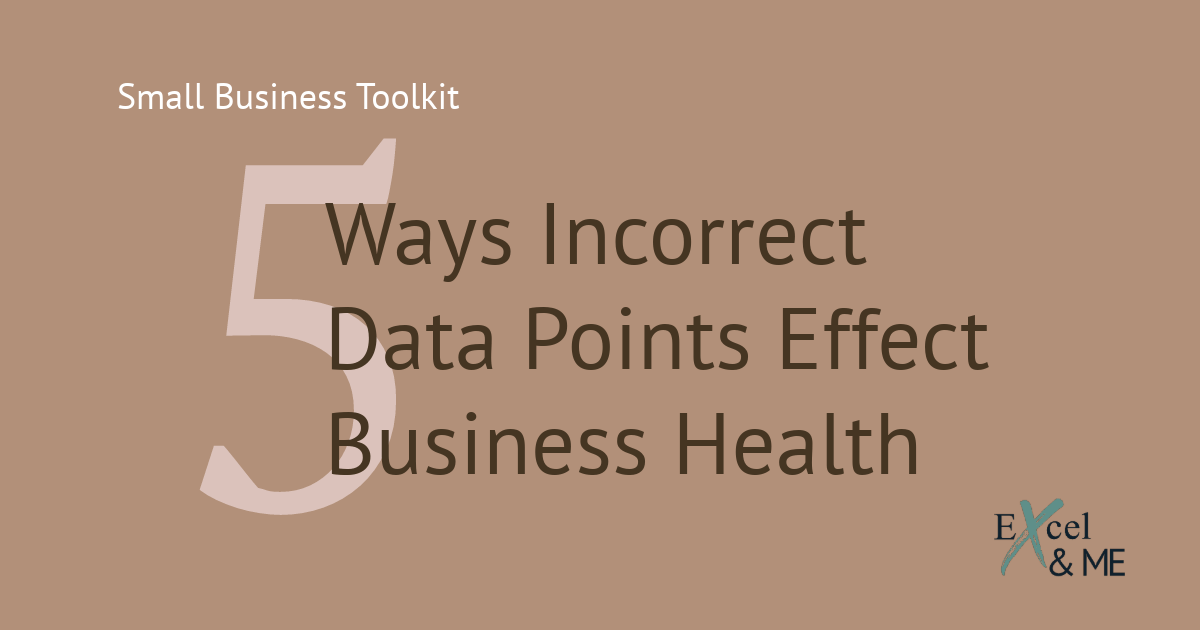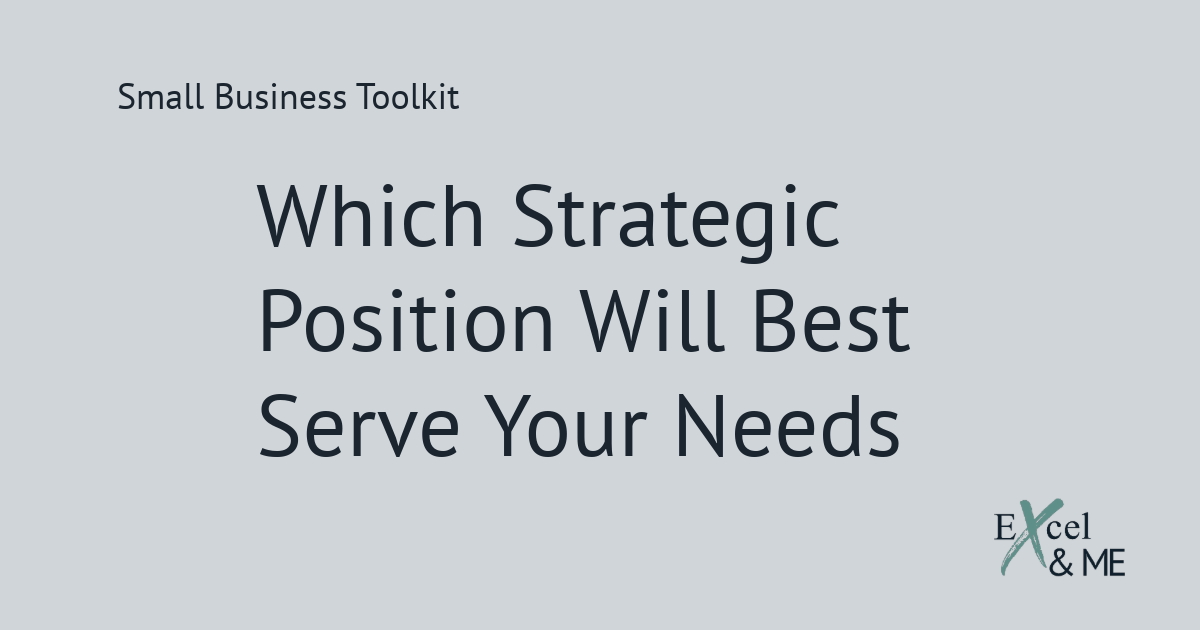Which Strategic Position Will Serve Your Needs Best?
For a critical business process that is supposed to be clear and direction oriented. Strategy can provoke angst and confusion for a lot of people — specifically, not knowing how to position your strategy or how to do it “right.” And with each aspect of your business, seemingly, in need of its own strategy. It can be tough to figure out which strategic position is right for you, and how it can be used to create the strategies that will best serve your needs.
Often strategies are more focused on the outcomes of a well-executed strategy. Improved margin, higher profits, better return on investment etc. Rather than being focused on what needs to be done or what conditions need to be true in order to bring your vision to fruition.
For a strategy to be effective, it needs to outline which strategic position is right for the delivery of the desired outcome. Along which what actions and decisions need to be made to support the chosen position. There are two videos from Harvard Business Review, that I feel, help explain how to decided which strategic positions is right for you.

2 Types of Strategic Positioning
Competitive Advantage
In the video – A Plan is Not A Strategy , Rodger Martin describes a strategic position that is focused on delivering your vision by having clarity on what your businesses competitive advantage is. In this way a business’s aim is to use its unique qualities to specify the terms, and operating framework, by which they will compete in the market.
Value Redistribution
In the video – What Is Strategy? It’s a Lot Simpler Than You Think, Felix Oberholzer-Gee describes a strategic position that is focused on delivering your vision by increasing the value of what already exists. In this way a business’s aim is to repurpose existing assets in order to demonstrate the overall value of the business.
Having a focal point of which strategic position to choose makes it possible to evaluate which actions are more aligned to that position. And therefore which position is more likely to serve your needs. Below, are examples of how each of these positions can be applied to some common forms of strategy used in business.
Which Strategic Position is Right For Your Pricing Strategy?
A pricing strategy is used to establish the best price for a product or service. The intent is to strike a balance between maximising profits while maintaining a level of flexibility to market demands.
Competitive Advantage
To use pricing as a tool to deliver your businesses vision, your businesses unique qualities would need to be such that it can justify an increased price. Apple is an example of a brand that has used their unique qualities to inform a pricing strategy. Through their commitment to innovation and user experience, Apple have been able to continually release new models at a higher price of its predecessor. And very rarely use red sale/final clearance offers to sell through older products.
And despite the many competitors that have come into the market through the years. The “true believers” remain willing to pay what is needed to experience the latest iteration of technological and experience advancements. And Apple stays committed to exceeding their expectations and continually surprise and delight their customers.
Value Redistribution
Using your pricing strategy to deliver your businesses vision with existing assets, requires a tailored approach. The first step would be assessing current performance to identify areas that where there is room to increase a customer’s willingness to buy.
Many fashion retail businesses adopt a price framework/architecture that enables them to be competitively priced across multiple hierarchies. In order to demonstrate the value of their overall business. Often this is referred to as good, better, best. Or entry, mid and exit. In both cases the aim is to have sufficient level of products priced competitively at each tier. Each product type would have items competitively priced at the lower end (good or entry). As well as items priced competitively in the middle (better or mid) and then finally there would be the top of the range options (best or exit).
Businesses that sell other brands, such as John Lewis will ensure they have stock of the appropriate brands so that they can be competitive at the entry, mid and exit price points for different product types. And businesses that sell a mixture of private label and branded, such as ASOS, will often use their own private label to “plug the gap” where they see opportunities in their price architecture.
Which Strategic Position is Right For Your Marketing Strategy
A marketing strategy is used to promote and sell a product or service. The intent is to position the product or service as the solution to a known pain point. And to convey the brand values in a way that resonates with the current or aspirational lifestyle of customers.
Competitive Advantage
Truthfully the essence of a marketing strategy is to clearly convey your unique business qualities to your audience. So that they will resonate with your beliefs and choose your business over the competition. However, with the ever increasing number of ways to communicate with customers. The need for a cohesive and instantly recognisable representation of your business is as important as ever. And in this way, your businesses unique qualities can be used to delivery your business vision.
You’re friendly neighbourhood outdoor/explorer gear brand. That wants you to adventure in a way that is safe for you and for the planet. That’s right I’m talking about Patagonia, is instantly recognisable. From the Patagonia aesthetic of silhouetted mountain ranges with a wanderlust type sunset. To its brand ethos of plant over profits – I’m paraphrasing – their marketing campaigns keep them in a lane all of their own.
Value Redistribution
A marketing strategy positioned to deliver more value from existing assets, will require a more tailored approach. In many cases the position conveyed to customers will be more along the lines of how the product/service offered is more convenient than the alternatives.
TKMaxx (TJMaxx in the US) and Amazon are two potential examples of this. Where a lot of their messaging is based on how their business solves a very common problem. Price and/or speed of delivery. In someways it does lean on the unique qualities of their businesses. But because neither are solely producing their own products you don’t shop with them because they have a best product. It’s more likely more a choice of practicality and/or convenience.
Which Strategic Position is Right For Your Sales Strategy
A sales strategy is focused on improving the positioning of a product or service within an existing and/or new market. While also increasing the customer lifetime value or share of wallet. In many ways a sales strategy is the combined implementation of a pricing and marketing strategy
Competitive Advantage
The unique qualities of a business will support a sales strategy when the product, service or brand resonates with the customers lifestyle.
Nike is a well known leader in sports apparel. They recently “rebranded” to lean into the growing wellness space, particularly for women. Many of its social handles changed to “Nike Wellness Collective” and much more of its workouts and product offerings have switched to be inclusive of the different life stages many women will experience.
They still maintain their competitive advantage as a leading sports apparel leader. And have used this to reposition themselves from an activity led sportswear brand. To an active lifestyle led sportswear brand. Now if you want the best gear, best workouts for support your active lifestyle you can look to Nike. Whereas before you make have opted for an alternative brand.
Value Redistribution
To deliver more value from existing assets with a sales strategy the products or services will need to be positioned for convenience.
Amazon comes to mind as a good example of this. The majority of products listed on their marketplace are from 3rd Party brands. And in order to grow their share of wallet for existing customers Amazon leans on convenience. There is an option to subscribe to specific items so they are always delivered at a set interval. Of to subscribe to Prime to always get free fast delivery, plus access to films and exclusive TV programmes and ad-free listening to podcasts.
Most of what Amazon offers can be sourced elsewhere. The difference is they are constantly working to increasing customers willingness to buy from them. By positioning themselves as the most convenient option, in comparison to every other option available to a customer.
What Should You Think About When Deciding Which Strategic Position is Right For You?
Anyone wanting to create a strategy will experience an element of where do I start. A simple google search for “what is a [fill in the blank] strategy” will return way more results than you would, could or should attempt to get through.
My suggestion for a starting point is to assess what your business is currently doing. That way you’ll uncover is there are qualities about your business that could be leveraged to deliver your vision. Or if there are ways you can redistribute the existing value in your business to deliver your vision.
For a strategy to be doable it needs to be focused on the tangible actions you can, and will do. Gaining a better understanding of how much value is currently generated or how you’re positioned within your niche. Will uncover improvements that can be made to existing processes in order to deliver your vision. Rather than starting completely from scratch.
If you find yourself getting overwhelmed while creating a strategy. Refocus yourself by assessing if the intention is to utilise a competitive advantage within the strategy to deliver the outcome. Or if the intention is deliver the vision by to redistributing existing value. And remember whichever strategic position you decide to take. It’ll be the continual actions and decisions made, throughout, that will either enlarge or diminish your ability to achieve your overall goal.
Like this post? You should see my newsletter.
Subscribe to the Excel & ME newsletter to get updates that will empower you to inform your business decisions with data.






